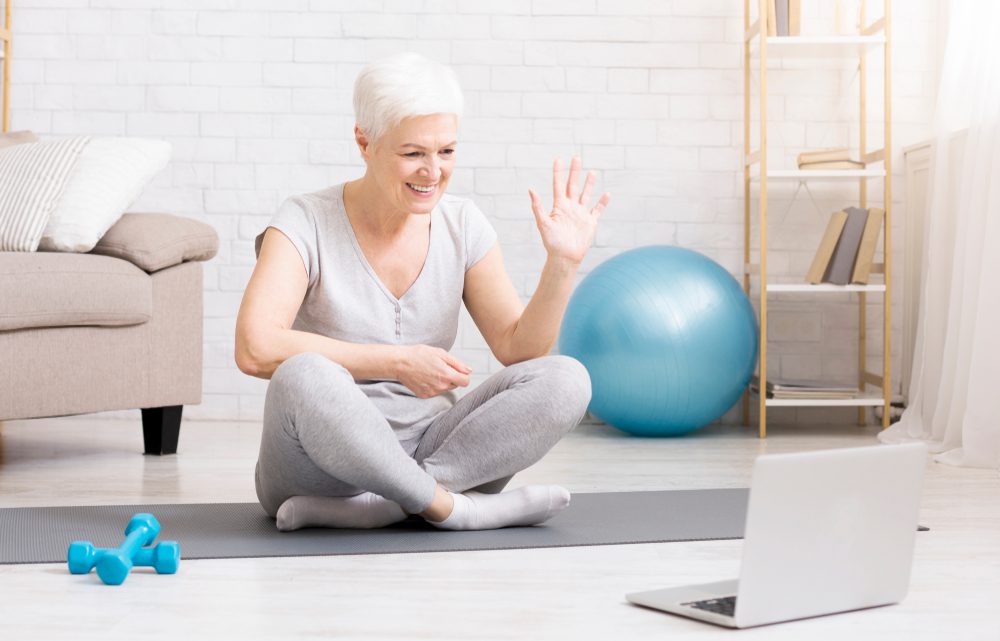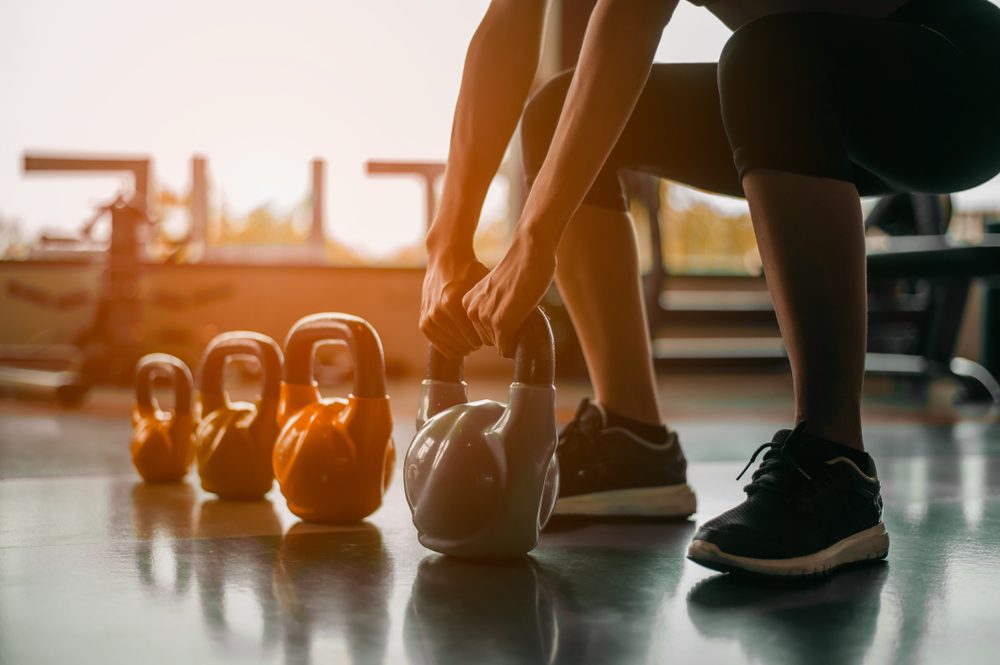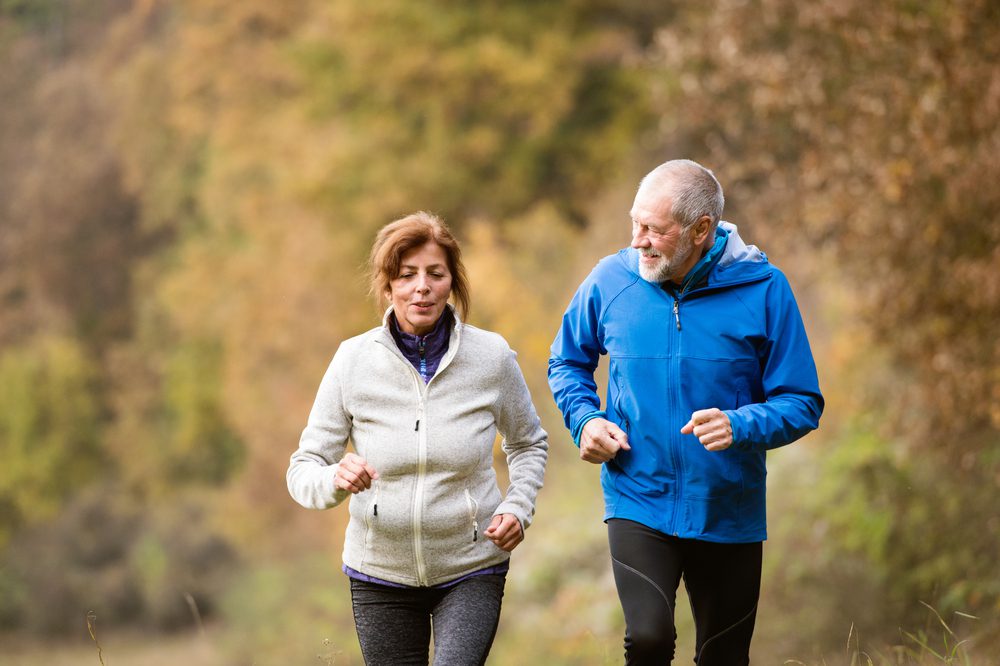7 Gentle Exercises to Build a Stronger Foundation
Here are seven simple, effective, and safe exercises designed to enhance your stability. Remember to start slowly, listen to your body, and always have a sturdy chair, wall, or countertop nearby for support. The goal is progress, not perfection!
1. The Chair Sit-to-Stand
Why it helps: This is one of the most functional exercises you can do. It strengthens the major muscles in your legs and glutes (your quadriceps, hamstrings, and buttocks), which are essential for walking, climbing stairs, and getting up from any seated position. It directly translates to real-world strength and is a fantastic starting point for any senior fitness routine.
How to do it: Sit in the middle of a sturdy, armless chair with your feet flat on the floor, hip-width apart. Keep your back straight and your chest up. You can cross your arms over your chest or hold them out in front of you. Engage your core muscles and, on an exhale, press through your heels to stand up fully. On an inhale, slowly and with control, lower yourself back down to the starting position. Avoid plopping down; the controlled lowering is just as important as the standing up. Aim for 8 to 12 repetitions.
Safety first: Ensure the chair is stable and won’t slide. If you’re new to this, you can lightly use your hands on your thighs to assist you, gradually using them less as you get stronger.
2. The One-Leg Stand
Why it helps: This classic exercise directly challenges and improves your balance by forcing your body to stabilize on a single point of contact. It strengthens the muscles in your standing leg, ankle, and hip, and it sharpens the connection between your brain and your body for better proprioception.
How to do it: Stand behind a sturdy chair or next to a countertop, holding on lightly for support. Shift your weight onto your right foot. Slowly lift your left foot off the floor, bending the knee. Keep your posture tall and your gaze fixed on a point in front of you that isn’t moving. Try to hold this position for 10 to 30 seconds. Lower your left foot slowly and then repeat on the other side. As you become more confident, you can try holding on with just one hand, then one finger, and eventually, not at all.
Safety first: Never perform this exercise in the middle of a room without support nearby. The goal is to challenge your balance, not to risk a fall.
3. The Heel-to-Toe Walk
Why it helps: Also known as the tandem walk, this exercise narrows your base of support, forcing you to engage your core and leg muscles more intensely to maintain stability. It mimics walking on an uneven surface or a narrow path, improving your dynamic balance—your ability to stay steady while moving.
How to do it: Stand next to a wall or a long countertop that you can touch for support. Place the heel of one foot directly in front of the toes of your other foot, as if you were walking on a tightrope. Keep your eyes up and focused on a spot ahead of you, not on your feet. Take a step forward, placing your back foot’s heel directly in front of the front foot’s toes. Continue for 10 to 15 steps. Then turn around and repeat.
Safety first: Go slowly and deliberately. It’s better to take a smaller, more controlled step than a large, wobbly one. Always keep your hand close to your support surface.
4. The Back Leg Raise
Why it helps: This movement targets your glutes and lower back muscles. Strong glutes are crucial for pelvic stability, which is the cornerstone of good balance and a healthy walking gait. This is a wonderful, low-impact way to build strength in your posterior chain.
How to do it: Stand behind a sturdy chair, holding on for balance. Keep your feet hip-width apart and your posture tall. Shift your weight onto your left leg. Keeping your right leg straight (do not lock your knee), slowly lift it straight back behind you. Squeeze your gluteal muscles as you lift. Go as far as you comfortably can without arching your back. Hold for a moment, then slowly lower the leg back to the starting position. Perform 10 to 15 repetitions on one side, then switch to the other.
Safety first: The movement should be small and controlled. The focus is on muscle engagement, not on how high you can lift your leg. Keep your core tight to protect your lower back.
5. The Side Leg Raise
Why it helps: This exercise strengthens your hip abductor muscles, which are located on the outside of your hips. These muscles are vital for stabilizing your body when you are standing on one leg, such as during the simple act of walking. Weak hip abductors can lead to an unsteady gait.
How to do it: Stand behind your sturdy chair or next to your countertop, holding on for support. With your back straight and toes pointing forward, shift your weight to your left leg. Slowly lift your right leg out to the side, keeping it straight. Lift it as far as you can while maintaining a tall, upright posture (avoid leaning to the opposite side). Hold for a second at the top, and then slowly lower it back down. Complete 10 to 15 repetitions before switching to the other leg.
Safety first: Focus on a smooth, controlled motion. Quality is much more important than the height of the leg lift.
6. The Wall Push-up
Why it helps: You might wonder what a push-up has to do with balance, but the answer is: a lot! Wall push-ups strengthen your chest, shoulders, and arms, which can help you catch yourself or push yourself up if you do stumble. More importantly, it teaches you to engage your core muscles, creating a stable “plank” from your head to your heels, which is key for overall body stability.
How to do it: Stand facing a clear wall, about arm’s length away. Place your palms flat on the wall at shoulder height and shoulder-width apart. Your feet should be flat on the floor. Keeping your body in a straight line, slowly bend your elbows and lean your body toward the wall until your nose is close to it. Push back to the starting position, making sure not to lock your elbows. Aim for 10 to 15 repetitions.
Safety first: Make sure your feet are on a non-slip surface. To make it easier, stand closer to the wall. To make it more challenging, move your feet further back.
7. The Gentle Tai Chi Reach
Why it helps: Tai Chi is renowned for its balance-enhancing benefits. This simplified movement incorporates the principles of slow, controlled weight shifting. It improves coordination, body awareness, and the ability to maintain stability while your center of gravity is in motion.
How to do it: Stand with your feet shoulder-width apart, knees slightly bent. Hold onto a chair with your left hand for support. Slowly shift your weight onto your left foot. As you do, extend your right arm forward and up, as if reaching for a cloud. Then, slowly shift your weight back to your right foot, bringing your right arm back down. The movement should be fluid and graceful. Repeat this slow weight shift and reach 8 to 10 times, then switch sides. Breathe deeply and calmly throughout the exercise.
Safety first: Focus on the sensation of your weight transferring from one foot to the other. The movement should feel gentle and relaxing, not strenuous.




















